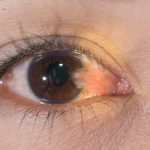The future prospects of cell
and gene therapy

Eye Disease
Role of Cell and Gene Therapy in Eye Disease
- Retinitis Pigmentosa (RP)
- Gene Therapy:
- Gene Addition: Retinitis pigmentosa is caused by mutations in various genes essential for photoreceptor function. Gene therapy aims to deliver functional copies of these genes to retinal cells. For example, using adeno-associated virus (AAV) vectors to deliver the RPE65 gene has shown success in restoring vision in patients with RPE65-related RP. This approach is exemplified by the FDA-approved treatment Luxturna.
- Gene Editing: CRISPR-Cas9 technology is being explored to correct mutations in genes like RPGR, which are responsible for X-linked retinitis pigmentosa. This technique can potentially restore normal gene function and halt disease progression
- Gene Therapy:
- Cell Therapy: Transplanting healthy photoreceptors derived from stem cells into the retina can replace damaged cells and restore vision. Research is ongoing to improve the integration and functionality of these transplanted cells.
- Age-related Macular Degeneration (AMD)
- Gene Therapy:
- Anti-VEGF Genes: AMD is associated with abnormal blood vessel growth in the retina. Gene therapy can deliver genes encoding anti-vascular endothelial growth factor (VEGF) proteins to inhibit this growth. This approach can reduce the need for repeated anti-VEGF injections, providing a longer-lasting treatment.
- Complement System Modulation: Gene therapy targeting the complement system, which is involved in the inflammation and damage seen in AMD, is being investigated. By delivering genes that inhibit complement activation, it may be possible to slow or stop the progression of AMD.
- Gene Therapy:
- Cell Therapy: Transplanting RPE (Retinal Pigment Epithelium) cells derived from stem cells can replace damaged cells in the retina, potentially restoring function and slowing AMD progression. Clinical trials have shown promising results in improving vision and retinal health.
- Leber Congenital Amaurosis (LCA)
- Gene Therapy: LCA is often caused by mutations in the RPE65 gene. The successful delivery of the RPE65 gene to retinal cells using AAV vectors has led to significant improvements in vision for patients with this condition. Luxturna, the first FDA-approved gene therapy for an inherited retinal disease, is used to treat RPE65-related LCA.
- Cell Therapy: Research is ongoing to develop stem cell-derived photoreceptor cells that can be transplanted into the retina to restore vision. These cells can potentially integrate into the retina and replace lost photoreceptors
- Choroideremia
- Gene Therapy: Choroideremia is caused by mutations in the CHM gene, leading to progressive vision loss. Gene therapy delivering a functional copy of the CHM gene to retinal cells using AAV vectors has shown promise in halting disease progression and improving vision in clinical trials.
- Glaucoma
- Gene Therapy: Glaucoma leads to the loss of retinal ganglion cells and optic nerve damage. Gene therapy aims to deliver genes encoding neuroprotective factors, such as BDNF (brain-derived neurotrophic factor), to protect retinal cells from damage and preserve vision.
- Cell Therapy: Transplanting stem cells that can differentiate into retinal ganglion cells or support existing cells is being explored as a treatment for glaucoma. This approach aims to replace lost cells and support the remaining retinal ganglion cells, potentially preserving vision.
